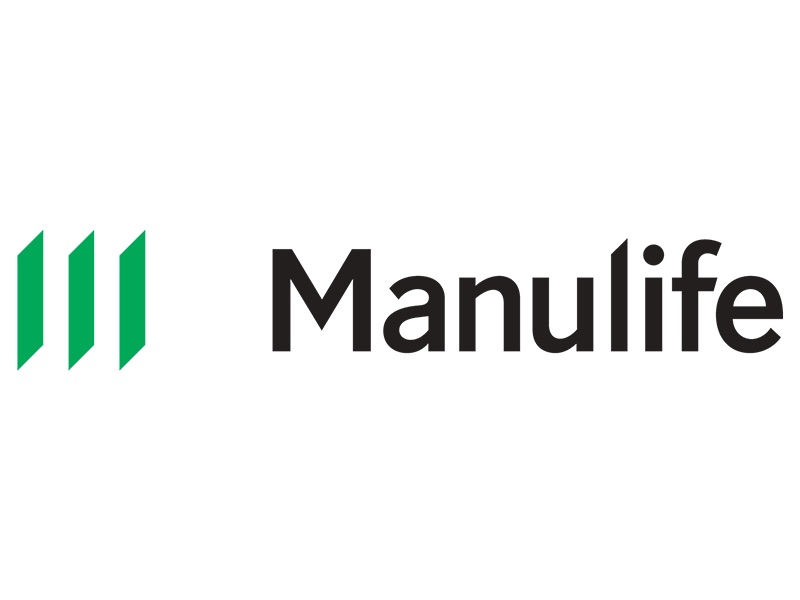Many or all of the products featured here are from our partners who compensate us. This may influence which products we write about and where and how the product appears on a page. However, this does not influence our evaluations. Our opinions are our own.
ALSO CONSIDER: Best high-interest savings accounts | Best online savings accounts | Best high-interest TFSAs | Best savings accounts
A registered retirement savings plan (RRSP) is a tax-advantaged way to save and invest for retirement.
If you’re just starting out, a high-interest RRSP account is a safe and easy way to build up your nest egg before locking away those precious funds in stocks, bonds, and mutual funds.
- The best high-interest RRSPs in Canada
- Top high-interest RRSP rates in Canada
- Things to know about registered retirement savings plans (RRSPs)
Summary of our picks for the best RRSP HISA
Best high-interest RRSPs in Canada
CIBC RRSP Daily Interest Savings Account

-
Interest Rate2.60%*Regular interest rate: 0.35%. *This is a combined bonus and regular annual interest rate paid on new deposits made to a CIBC RRSP Daily Interest Savings Account. For eligible accounts opened during the offer period, the bonus and regular rate are earned on the full daily closing balance and paid monthly. Bonus interest rate offer expires March 31, 2022.Promotional rate
-
Bonus OfferN/A
-
Monthly Fee$0
-
Our Take
- CIBC’s Daily Interest Savings Account (DISA) is a short-term alternative for RRSP funds with easy access to your money.
- Canadian Imperial Bank of Commerce, also known as CIBC, is a full-service multinational financial institution and one of the Big Six banks in Canada. Read our review of CIBC for more information.
-
Product Details
- CIBC RRSP Daily Interest Savings Account (DISA) can be an RRSP starter account or a short-term alternative for your RRSP funds.
- Earn guaranteed principal and interest with complete access to your money to make withdrawals at any time.
- Invest at your own pace with a low minimum investment of only $25, you can start your RRSP savings while you decide what to do in the long term.
- Tiered interest is calculated daily and paid to you monthly. You can also set up a Regular Investment Plan to maximize your compound interest.
- Pay no fees on your account, unless you transfer all or part of your RRSP funds to another financial institution, a $100 fee applies.
- For eligible accounts opened during the offer period, the bonus and regular rate are earned on the full daily closing balance and paid monthly.
- Eligible deposits are insured by the Canada Deposit Insurance Corporation, subject to limitations as outlined by the CDIC.
Tangerine RSP Savings Account

-
Interest Rate5.00%To earn 5.00% interest for 5 months, you must become a new client online by March 30, 2023, using the promo code EARNMORE and open your first eligible Chequing Account and Savings Account (including TFSAs, RSPs, RIFs and US$ Savings Accounts) within 30 days. Regular interest rate: 1.00%, no minimum balance.Promotional rate
-
Bonus OfferUp to $400To earn the $400 Bonus, Open your first Savings Account and Chequing Account within 30 days of becoming a Client. Activate your Client Card and start earning your Bonus. Use your Client Card for online purchases and online bill payments to earn 20% cash back on Eligible Transactions for 60 days.
-
Monthly Fee$0
-
Our Take
- This flexible, no-fee RRSP comes with a generous promotional offer that will earn you cash and a high rate of return for five months.
- Tangerine is a subsidiary of Scotiabank and offers chequing and savings accounts, GICS, registered accounts, credit cards, mortgages, loans and investment products. Read our review of Tangerine for more information.
-
Product Details
- No monthly fee.
- Automated savings program available.
- Manage your money by phone, through online banking and a mobile app.
- Other Tangerine RSP investment options include RSP GICs, available in 90-day to 5-year terms, and investment accounts and portfolios.
- Service fees are listed online.
- Deposits and withdrawals are free.
- $50 fee to transfer your RRSP to another bank (transferring another in is free).
- No minimum balance is required.
- Eligible for CDIC deposit insurance.
Motive RRSP Savings Account
-
Interest Rate2.60%Earn 0.25% interest for $0-$2,500 balances, and 2.60% for balances $2,500.01 and over.With $2,500.01 minimum balance
-
Bonus OfferN/A
-
Monthly Fee$0
-
Our Take
- Earn interest at a competitive rate on this no-fee and no-minimum balance high-interest RRSP.
- Motive Financial is an online division of Canadian Western Bank and offers chequing and savings accounts, registered plans and GICs.
-
Product Details
- Interest is calculated on the daily closing balance at the applicable rate tier and paid on the last day of the month, for the period beginning on the last day of the previous month and ending on the second last day of the month.
- No monthly fee.
- No minimum contribution.
- Manage your money by phone, through online banking and a mobile app.
- Other RRSP investment options include the Motive® RRSP GIC, available in one to 10-year terms.
- Service fees are listed online.
- Free withdrawals and deposits.
- $50 fee to transfer your RRSP to another bank (transferring in another is free).
- $50 fee to close the account within one year of opening.
- No minimum balance is required.
- Eligible for CDIC deposit insurance.
- Motive Financial products are not available to Québec residents.
Achieva Financial RRSP Savings Account

-
Interest Rate3.40%No minimum balance required
-
Bonus OfferN/A
-
Monthly Fee$0
-
Our Take
- This online-only high-interest RRSP features a competitive rate and the ability to set up spousal RRSPs.
- AcceleRate Financial is an online division of Manitoba’s Access Credit Union and offers savings accounts, GICs, TFSAs, Registered Retirement Savings Plans (RRSPs), and Registered Retirement Income Funds (RRIFs).
-
Product Details
- 3.40% variable interest rate. Interest is calculated on the daily closing balance and added to the principal on the last day of each month.
- No monthly fee.
- To open this account, you must agree to become a member of Cambrian Credit Union Limited, which requires a $5 share. Your share is considered an investment and is fully refundable should you decide to cancel your membership.
- Earn $1 per month when you choose electronic documents.
- Ability to set up recurring contributions.
- Manage your money by phone, through online banking and a mobile app.
- Other Achieva RRSP investment options include spousal RRSPs, RRSP GICS, available in one to five-year terms, and Qtrade Direct Investing online investment accounts.
- TFSAs, RRIFs, Locked-In Retirement Accounts (LIRAs) and Life Income Funds (LIFs) are also available.
- Service fees are listed online.
- $15 fee to close the account within six months of opening.
- No minimum balance is required.
- Eligible for Deposit Guarantee Corporation of Manitoba deposit insurance.
Manulife Bank Registered Advantage Account

-
Interest Rate1.25%No minimum balance required
-
Bonus OfferN/A
-
Monthly Fee$0
-
Our TakeWhy we like it
- The no-fee RRSP Advantage Account offers high-interest savings, a generous promo offer, and access to RRSP loans to help speed you toward your retirement goals.
- Manulife Bank has provided Canadians with branchless banking since 1993. Services include chequing and savings, credit cards, mortgages, loans, and investment accounts.
-
Product Details
- 1.25% regular posted variable annual interest rate. Interest is calculated daily and paid monthly.
- No monthly fee.
- Manage your money by phone, through online banking and a mobile app.
- There are no fees to open an account, make deposits, or withdraw funds.
- Other Manulife Bank RRSP investment options include spousal RRSPs and guaranteed investment certificates, available in 30-day to five-year terms.
- TFSAs and RRIFs are also available.
- Access to RRSP loans to boost contributions.
- Deposits and withdrawals are free.
- No minimum balance is required.
- Eligible for CDIC deposit insurance.
Top high-interest RRSP rates in Canada
| Savings Account | Interest Rate | Monthly Fee | Insurance |
|---|---|---|---|
| Accelerate Financial Registered Retirement Savings Plans (RRSPs) | 3.40% | $0 | Deposit Guarantee Corporation of Manitoba |
| Achieva Financial RRSP Daily Interest Savings Account | 3.40% | $0 | Deposit Guarantee Corporation of Manitoba |
| Alterna Bank RRSP HISA | 2.50% | $0 | CDIC |
| Canadian Western Bank WestEarner® RRSP account | 0.90% | $0 | CDIC |
| CIBC CIBC RRSP Daily Interest Savings Account (DISA) | up to 2.60%* | $0 | CDIC |
| EQ Bank RSP Savings Account** | Up to 5.00% | $0 | CDIC |
| Home Trust RRSP High Interest Savings Account (HISA) | 3.55% | TBD by issuer | CDIC |
| Hubert Financial Happy RRSP HISA** | 3.55% | $0 | Deposit Guarantee Corporation of Manitoba |
| ICICI Bank Retirement Savings Plan (RSP) Savings Account | 1.25% | $0 | CDIC |
| Manulife Bank Registered Advantage Account | 4.50% | $0 | CDIC |
| MAXA Financial RRSP High Interest Savings Account | 3.35% | $0 | Deposit Guarantee Corporation of Manitoba |
| Meridian Credit Union RRSP HISA | 2.50% | $0 | Financial Services Regulatory Authority of Ontario |
| Motive RRSP Savings Account** | 0.25% - 2.60% | $0 | CDIC |
| Motusbank RRSP High interest savings account | 2.50% | $0 | CDIC |
| National Bank of Canada Cash Advantage Solution RRSP | 1.10% | $0 | CDIC |
| Outlook Financial RRSP High-Interest Savings Account | 3.50% | $0 | Deposit Guarantee Corporation of Manitoba |
| Steinbach Credit Union RRSP Variable Savings (Manitoba only) | 5.10% | $0 | Deposit Guarantee Corporation of Manitoba |
| Tangerine RSP Savings Account | up to 5.00% | $0 | CDIC |
| WealthONE RRSP Savings Account | 3.40% | $0 | CDIC |
**Not available to Quebec residents.
Methodology
NerdWallet Canada selects the best high-interest registered retirement savings accounts based on several criteria, including annual percentage yields, minimum balance requirements, fees, digital features, access to other investment products, and more. Only RRSPs from financial institutions that are available in more than one province are considered for this list.
Things to know about registered retirement savings plans (RRSPs)
By Helen Burnett-Nichols
What is an RRSP?
An RRSP is a savings plan registered with the Canadian government that you can contribute to until age 71. The plan allows you to hold investments and put money aside for retirement on a tax-deferred basis. You can deduct contributions made to the account annually from your taxable income.
Types of RRSPs
There are three different types of RRSPs:
An individual RRSP is a plan held in your name, and you receive the tax benefits. This type of plan is the most common and offers the most flexibility for investment decisions.
A spousal RRSP allows one partner — usually earning a higher income — to contribute to an RRSP in their spouse’s name. The contributor receives the tax deduction, but the benefiting spouse owns the investments inside the RRSP. Spousal RRSPs also offer tax advantages to families during retirement by letting spouses split income more evenly.
A group RRSP is an employer-managed plan which involves holding an individual RRSP at a financial institution. Contributions come from your pay, and, in some cases, your employer may match. You will likely have limited choices over the investments held in the plan.
» MORE: What are registered pension plans?
What is the best way to invest in an RRSP?
An RRSP can hold different investments, including mutual funds, stocks and cash. The interest or returns you earn depend on the type of RRSP account and how you choose to hold your investments.
You can elect to have investments managed by an advisor at a financial institution, like a bank or credit union. Or, you could choose a self-directed plan, where you make your own investment decisions, often for a lower fee. Both full-service or discount brokerages typically offer self-directed RRSPs.
An RRSP can hold several types of qualified investments, including:
- Cash, often held in a high-interest RRSP savings account
- Canadian and foreign equities
- Exchange-traded funds (ETFs)
- Guaranteed investment certificates (GICs)
- Savings bonds, government bonds and corporate bonds
- Treasury bills
- Eligible mutual funds
The rates of return on the investments vary greatly, depending on what you choose to hold in your plan. Furthermore, the value of your RRSP may not be guaranteed to go up and may decrease in value, especially if you own stocks.
What is a high-interest RRSP savings account?
High-interest RRSP savings accounts help account holders save regularly for retirement. They are essentially just like a regular high-interest savings account but offer a better interest rate than non-registered accounts.
This option is ideal for those looking to put money aside while considering what they want to do with their funds over the longer term.
» See our picks: The best high-interest savings accounts in Canada
How high-interest RRSPs work
High-interest RRSPs may not charge any monthly fees or require a minimum balance or contribution but still provide tax benefits.
Some high-interest RRSPs provide a tiered interest rate structure that offers higher rates as your savings increase. Compounding interest rates (calculated daily and paid monthly) on RRSP savings accounts vary by financial institution.
How to open an RRSP
You’re eligible to open and contribute to an RRSP until December 31 of the year you turn 71, as long as you earned income and filed an income tax return in Canada the previous year. Children under 18 are also eligible to open an RRSP with the consent of their parent or legal guardian if they have created RRSP contribution room by earning income and filing a tax return with the CRA.
Opening an RRSP involves filling out an application, which many providers will allow you to do online. The institution will probably ask you about your investment knowledge and financial goals. You will need your previous tax year’s Notice of Assessment and information about who you’d like to select as your beneficiary.
» MORE: What is a tax return?
How to choose and compare RRSPs
Before choosing an RRSP, consider what you’re looking to include in the plan and how hands-on you would like to manage your investments. For example, are you looking to self-direct your portfolio, or would you like an advisor to manage funds on your behalf? Are you interested in a plan that operates like a savings account, or would you prefer access to a full suite of investment products?
Once you’ve determined how you approach RRSP investing, you can compare providers and accounts. Be sure to look at account fees, the investment types offered, and the rates of return.
How to use an RRSP
RRSP contributions
Once you have opened an RRSP account, you can contribute to your plan through your bank account or investment account online, or via your advisor. You can also set up regular pre-authorized debits or make a lump sum contribution before the RRSP deadline.
Your annual RRSP contribution room will be made up of 18% of your earned income in the previous year, up to a maximum contribution amount that changes yearly (for the 2022 tax year, this amount is $29,210). If you didn’t make your maximum contribution in previous years, you’re able to carry any unused contribution room forward to use this year or in future tax years until age 71.
You can also have more than one RRSP, but your annual contribution limit stays the same, whether you’re contributing to one plan or three.
If you over-contribute to your RRSP, the Canada Revenue Agency will tax the excess amount at 1% per month. You can overcontribute by $2,000 without a penalty. However, you won’t get a tax break on the extra contribution.
» Get ready: How to prepare for the 2021 RRSP deadline
RRSP and taxes
Each year you contribute to your RRSP, your financial institution will send you two statements. These statements will show your contributions — from March 2 to December 31 of the previous year and for the first 60 days of the current year — which you can claim on line 20800 of your tax return to reduce last year’s net taxable income. You can also choose to claim your contributions in future tax years.
RRSP withdrawals
RRSPs are designed to help save for retirement, so taking money out of an RRSP earlier than intended will cost you unless the funds are for the Home Buyer’s Plan or the Lifelong Learning Plan.
First, early withdrawals are subject to withholding tax of 10%-30% (or 5%-15% in Quebec), which your financial institution will remit to the government on your behalf. The withdrawn amount is also considered taxable income, which you must declare on your tax return.
Your RRSP reaches maturity on December 31 of the year you turn 71. At this point, you must withdraw the funds. You have a few options regarding what to do next:
- Take a lump sum payment, which will be subject to withholding tax and added to your income for the year.
- Convert your RRSP to a registered retirement income fund (RRIF), which will require you to make annual minimum withdrawals that are included in your taxable income each year but are not subject to withholding tax.
- Purchase an annuity, which offers a guaranteed income for life or for a specified period, not subject to withholding tax, but you may have to pay tax on the income payments.
» Just because you can doesn’t mean you should: What you should know about RRSP withdrawals
RRSP benefits/advantages:
One of the main advantages of an RRSP is the tax benefits it offers, both when you contribute and when you withdraw the funds in retirement. For example, each RRSP contribution reduces your net taxable income.
Money held within an RRSP — both the amount you contribute and any capital gains, dividends or interest on those funds — is also sheltered from tax until you take it out of the plan. If you withdraw RRSP funds when you retire, you may be in a lower tax bracket than when you contributed the money and will therefore pay less tax on the withdrawal.
» MORE: 10 ways to make the most of your RRSP
RRSP benefits/advantages compared to the TFSA
While RRSPs and tax-free savings accounts (TFSAs) are both registered savings vehicles, they offer investors different benefits, especially tax perspectives.
- Whereas RRSP contributions are tax-deductible, any money you put into your TFSA is not.
- When you withdraw money from your RRSP, you pay tax, though possibly at a lower rate if you’re retired. TFSA withdrawals are always tax-free, as you’ve already paid tax on the money you’ve invested.
- With the rules around withdrawals, RRSPs are designed for retirement savings, while you can use TFSAs for any savings goal.
» See our picks: Canada’s Best High-Interest TFSAs
-
FAQs
-
How much can I put in my RRSP?
Each year, the amount you can contribute to your RRSP depends on how much you’ve earned. You can contribute 18% of your total income earned in the previous year, up to a maximum limit set by the government (in 2022, this amount is $29,210), plus any unused contribution amounts of earlier years.
To find out your RRSP contribution limit for this tax year, check your Notice of Assessment from the previous tax year or log in to My Account on the CRA website.
-
Does an RRSP reduce taxable income?
Yes, RRSP contributions reduce your net taxable income. You will also likely be paying less tax on these funds when you take them out of the plan, often at retirement, when you’re in a lower tax bracket.
-



